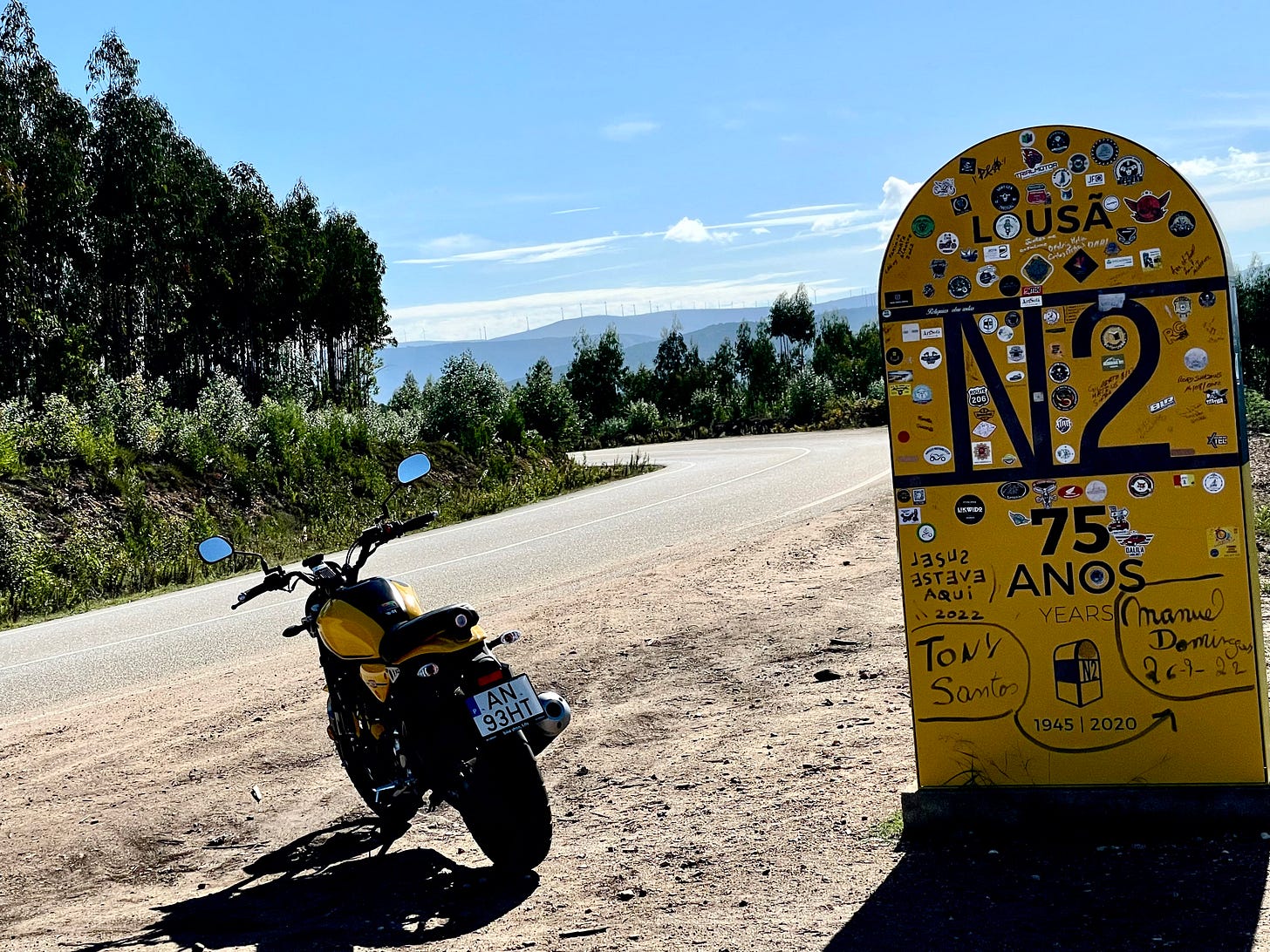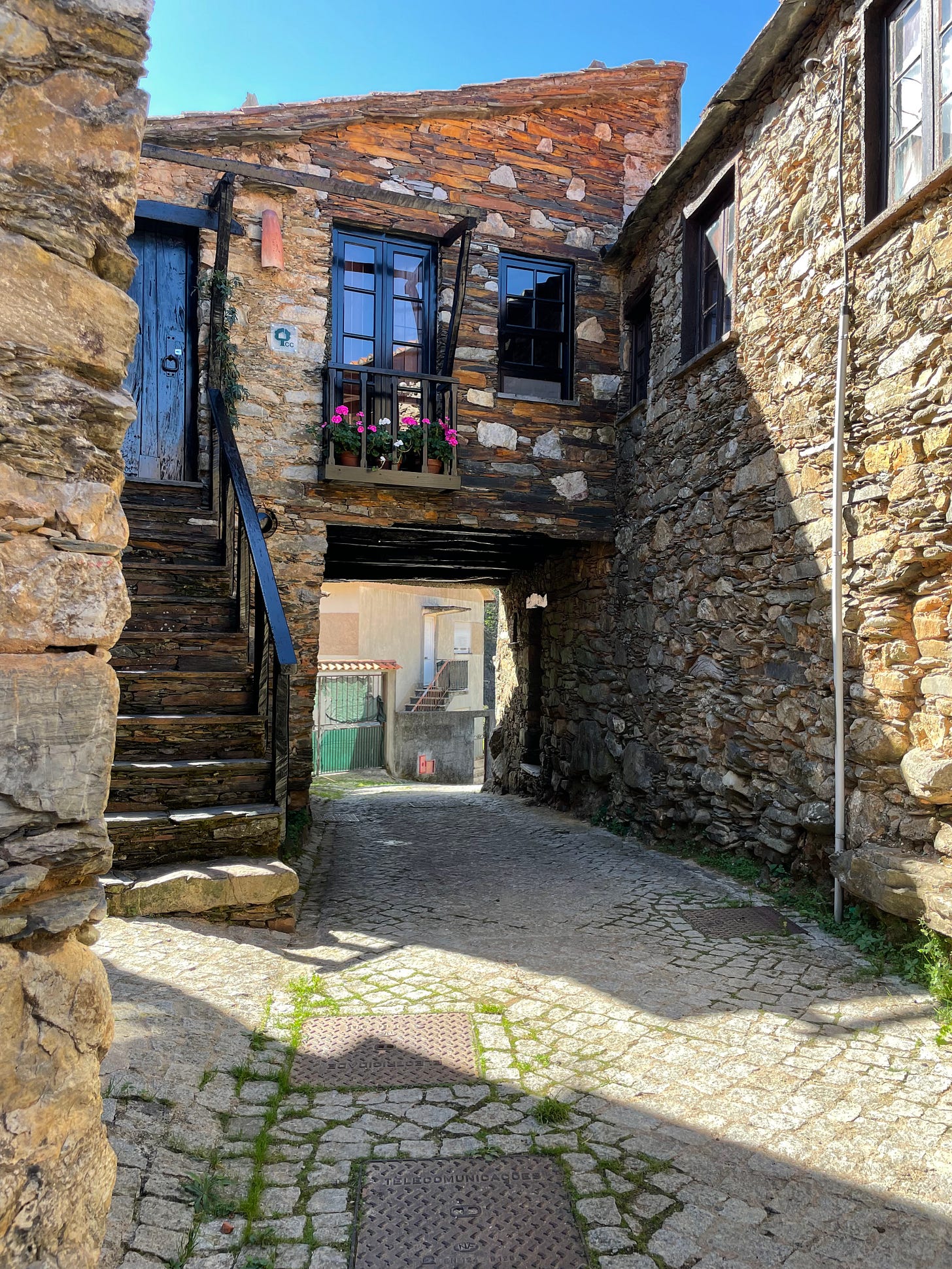I get lost pretty regularly in the central mountains of Portugal . This comes in part because of my inherent distrust of GPS systems and my total ineptness in trying to operate anything digital. Besides, I really don’t mind exploring this way
.
Mountains typically have river valleys and as long as you stay in the valley, how lost can you get? Rivers go one way so they are a pretty reliable indicator as well. Also, using them to navigate does not require a password.
So it was another beautiful Fall day to wander and I had been wanting to explore the Schist villages around Góis, about 40 minutes east of Coimbra. In this part of Portugal, there still exist historical enclaves that blend into their landscape, both historically, culturally and physically. Schist is a timeless material of many architectural expressions, from cosy stone cottages to castles of chivalrous heritage.
I had wandered into this Silurian schist Citadel, the Castle of Arouce, on another magical mystery tour. Classified a National Monument, it was constructed in the second-half of the 11th century, on the outskirts of Lousã.
Going to Góis and beyond was a good excuse to wind down National Highway 2, or more commonly referred to as the N2 . This butter smooth piece of pavement manifests Emerson’s quote about Life being about the Journey and not the Destination. This historic byway pretty much covers all the bases, stretching from the southern to northern borders of this historic country.
Beautiful layered rock buildings seem like an extrusion from the earth itself. Tethered to the land and connected just as much by history and tradition; people have built schist houses here for millennia and that memory is preserved in the rock.
The Schist Villages in Central Portugal have that primordial relationship to their environment and past, a construction in natural harmony with mountain landscapes. Teutonic plate collisions formed the mountains around Góis four to six million years ago pushing gneiss, quartzite and schists to the surface.
Pena is one of 27 villages of shale scattered in the hills of Lousão and Açor and spread to the Serra da Estrela, on the banks of the river Zêzere.
A beautiful combination of schist and quartzite, the Penedos de Góis precipice guards the mountainside grotto where a tenacious chestnut tree, one that embodies the spirit of second chances, attends the small bridge at the entrance to Pena village
Sitting on the edge of this revered ancient tree, listening to the gentle babble of the brook, I ate my Iberian lunch of cheese, bread and choruriço. A hundred or so years ago my grandfather, a young sheep herder, lived in mountains like these in southern Italy. Sometimes when I hear nothing else but nature, he sneaks up on me and whispers in my ear. At times like this, I really wish I understood Italian.
Between 2000 and 2002 the “Aldeias do Xisto” Program was conceived and planned in collaboration with the municipalities. That network grew and now consists of the 27 villages. You can now sleep, eat and live in a schist village and even rent your own schist house on AirBnb.
To learn more and explore recreational opportunities, I recommend a uniquely designed website I think you will enjoy.
https://www.aldeiasdoxisto.pt/pt/visitar-e-usufruir/natureza-ativa/cyclin-aldeias-do-xisto












